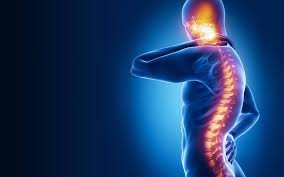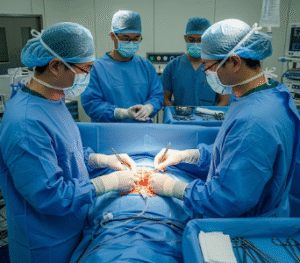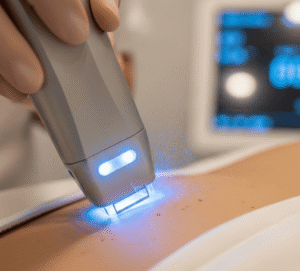Overview
Central Cord Syndrome (CCS) is the most common type of incomplete spinal cord injury, typically caused by trauma that compresses or damages the spinal cord in the cervical (neck) region. It often leads to more severe weakness in the arms than in the legs, along with varying degrees of sensory loss and bladder dysfunction. In Korea, world-class spine and neurosurgery centers provide cutting-edge treatment, ranging from emergency surgical interventions to advanced rehabilitation programs.
What is Central Cord Syndrome?
Central Cord Syndrome is a neurological disorder caused by injury to the central part of the spinal cord. Unlike complete spinal cord injuries, CCS does not completely sever communication between the brain and the body but instead disrupts nerve pathways in the center of the cord. This results in disproportionate motor weakness in the upper limbs compared to the lower limbs.
Symptoms
- Greater weakness in arms and hands than in legs
- Loss of fine motor skills (difficulty with writing, buttoning clothes, etc.)
- Sensory loss below the level of injury
- Difficulty with bladder or bowel control (urinary retention or incontinence)
- Pain, tingling, or burning sensations
- Variable levels of walking difficulty
Causes
- Trauma to the cervical spine (commonly hyperextension injury in elderly with arthritis)
- Falls, motor vehicle accidents, or sports injuries
- Degenerative spinal conditions such as cervical spondylosis
- Spinal cord compression from tumors or disc herniation
- Ischemia (restricted blood flow to the spinal cord)
Risk Factors
- Advanced age (due to arthritis or spinal stenosis)
- Pre-existing cervical spondylosis or degenerative spine disease
- High-risk activities (e.g., contact sports, diving accidents)
- Osteoporosis or weakened bones
- Conditions that predispose to falls (e.g., balance disorders)
Complications
- Permanent weakness in arms and hands
- Reduced mobility and independence
- Chronic neuropathic pain
- Bladder and bowel dysfunction
- Psychological impact, including depression and anxiety
- Increased risk of recurrent injuries due to impaired coordination
Prevention
- Using protective gear during sports and physical activities
- Fall prevention in elderly populations
- Early treatment of cervical spondylosis and degenerative spine conditions
- Practicing safe driving and road safety measures
- Maintaining strong bone health through diet and exercise
Treatment Options in Korea
Korea offers some of the most advanced spinal injury care in Asia, with multidisciplinary teams including neurosurgeons, orthopedic spine surgeons, rehabilitation specialists, and physiotherapists.
Acute Management
- Immediate spinal immobilization after injury
- Intravenous corticosteroids (in selected cases, to reduce inflammation)
- Surgical decompression and stabilization (laminectomy, fusion, or discectomy) for patients with significant spinal cord compression
Rehabilitation & Recovery
- Intensive physical therapy to improve mobility and strength
- Occupational therapy to restore independence in daily activities
- Bladder and bowel training programs
- Robotic-assisted gait training and exoskeleton devices, available in top Korean rehabilitation hospitals
- Pain management using medications and nerve stimulation techniques
Advanced Therapies
- Stem cell therapy and regenerative medicine (research ongoing in Korea)
- Spinal cord stimulation (SCS) for neuropathic pain control
- Neurorehabilitation robotics – widely adopted in Korean rehabilitation centers













